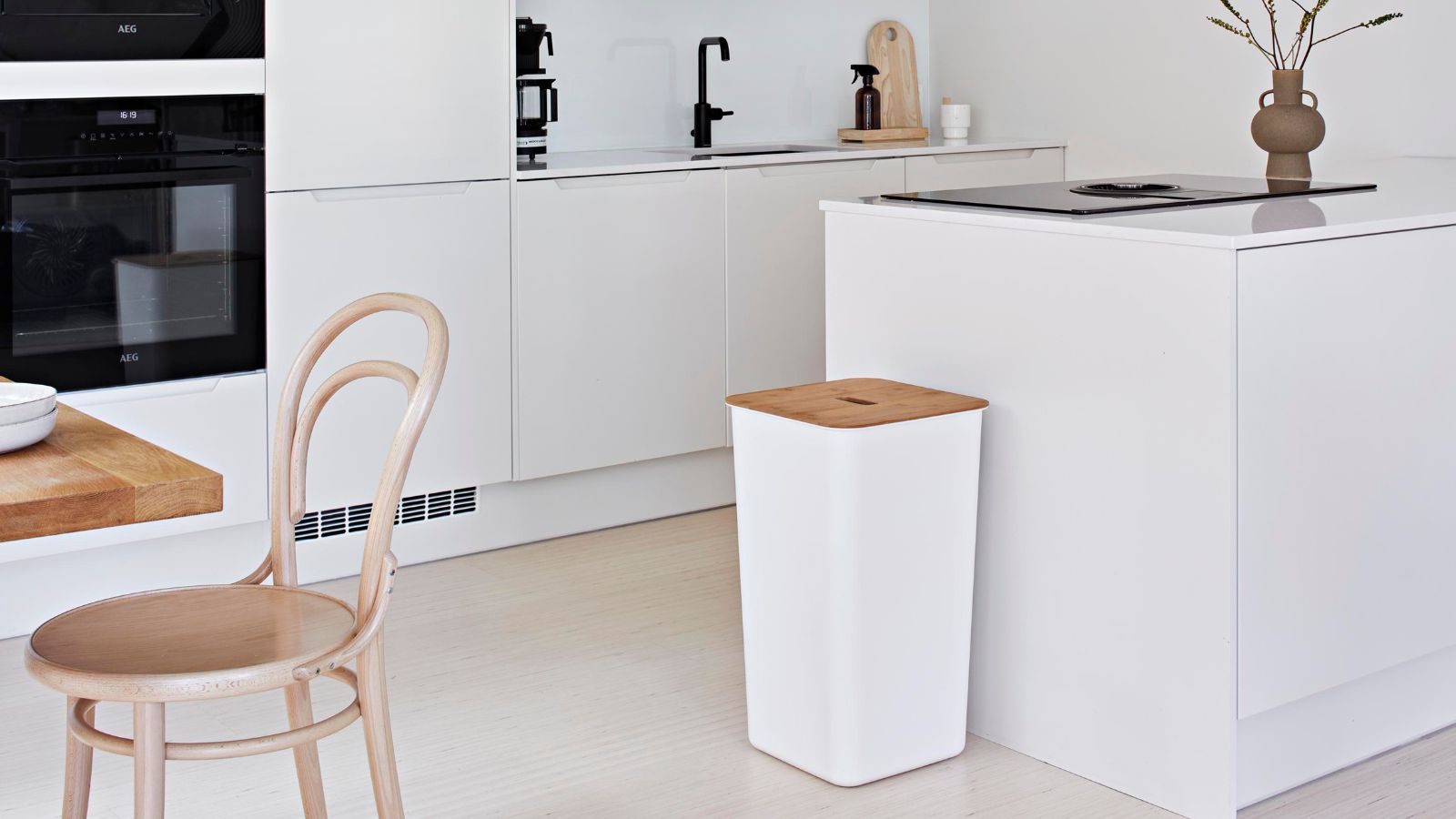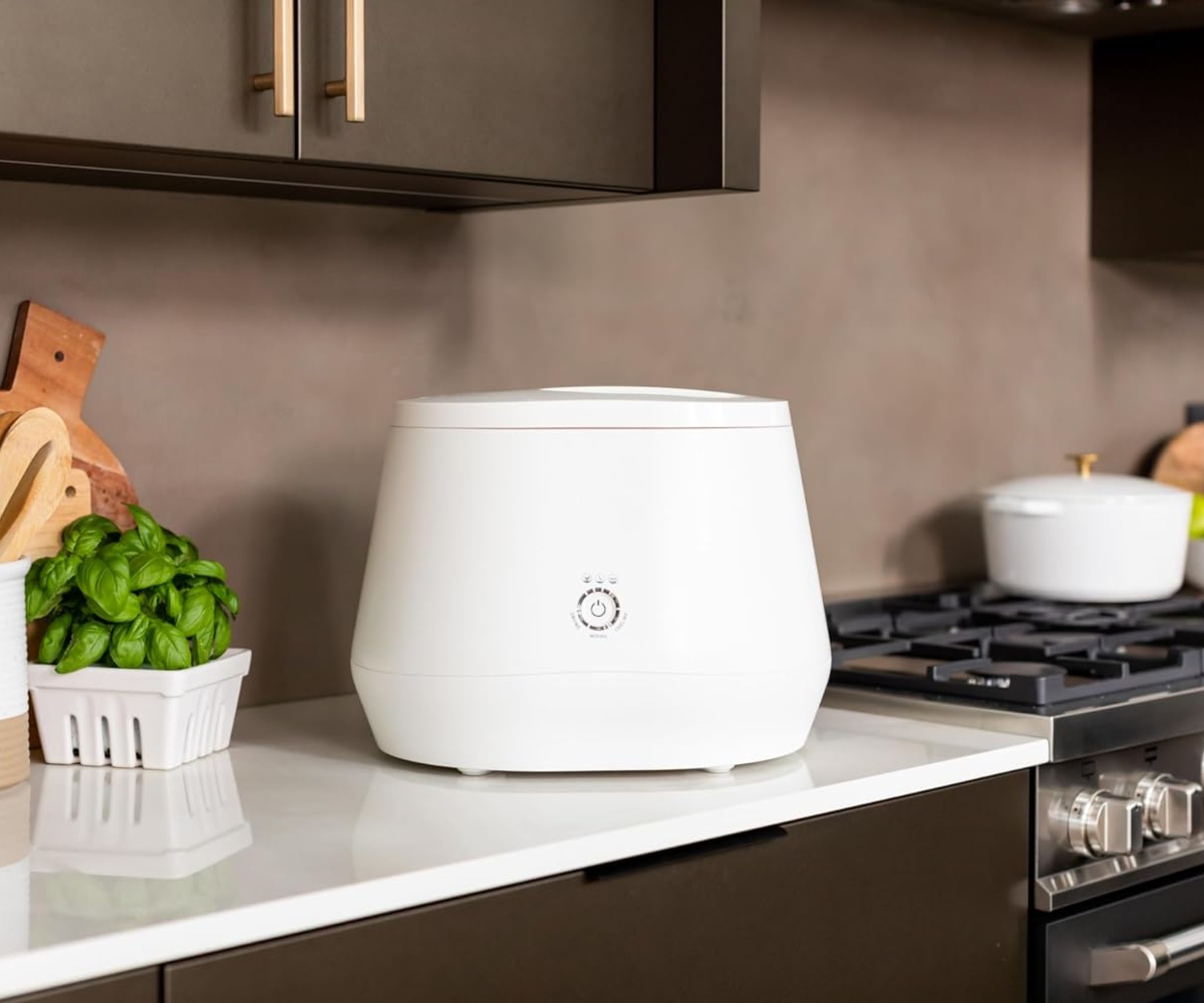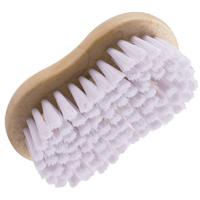How to clean a trash can – 5 steps cleaning experts always use
Pros share their top tips for a successful deep clean


Cleaning the trash can...everyone's favorite job. Well, maybe not, but it is a crucial home maintenance task that is key to keeping your home hygienic and smelling fresh.
The 'out of sight, out of mind' mentality is often a reason why we neglect to clean our trash cans as frequently or as thoroughly as we should (aside from the dread of taking on this task). While it's important to know how to mask trash can smells and how you can hide a trash can in a kitchen, it's also essential to deep clean your trash cans periodically to stave off odors and bacteria.
Although learning how to clean a trash can may not seem like a task that you need expert advice to do successfully, trust us, using the right cleaning tips and products can make a huge difference in ensuring your bin is debris, grease, and odor-free.
How to clean a trash can
These are the five steps cleaning experts always use when cleaning a trash can.
1. Empty and rinse

Begin by emptying the trash can completely and disassembling any removable parts, like a liner or lid. Rinse all parts of the bin separately with hot water.
'For stubborn debris, rinse the can with a hose or under a strong water stream to loosen grime,' recommends Austin Jones , CEO of Millennium Facility Services. Alternatively, you can use dish soap or baking soda mixed with warm water to break down food residues and reduce odors. Let this soak in the bin for 10 minutes before giving it a thorough rinse with hot water.
2. Scrub thoroughly

With a soft-bristled brush, scrub both the inside and outside of the can. You can employ a mixture of dish soap and warm water to dampen the brush or apply the solution using a spray bottle. To add a fresh scent, you can mix a few drops of lemon juice which is antibacterial, or your favorite essential oil with antibacterial properties to this cleaning solution.
Pay special attention to seams and the bottom of the trash can where grime typically accumulates.
JSCARLIFE Deep Scrub Cleaning Brush | Was $10.99, now $9.99 at Amazon
Essential Oils by PURE AROMA | $9.98 from Amazon
This kit includes eucalyptus, lavender, lemon grass, peppermint, and tea tree essential oils, all of which have antibacterial and microbial properties.
3. Disinfect

'To disinfect your trash can, mix 1/8 cup (30 ml) of bleach in 1 liter of hot water,' advises Yessica Bello, professional cleaner at Bello’s Cleaning. 'Spray or apply this solution inside the trash can and scrub using a long-handled brush.
'Let it sit for another 10 minutes before rinsing with water. This step is crucial in killing bacteria and eliminating mold.'
Alternatively, use a disinfectant cleaner designed to cut through grease and destroy bacteria. P&G Pro Line disinfecting floor and surface cleaner, from Walmart is highly effective and safe for everyday use.
Make sure to wear protective gloves throughout this process.
4. Rinse and dry

Rinse the trash can thoroughly with clean water to remove any remaining cleaning solution and bacteria.
Let it air dry completely – proper drying helps prevent the growth of mold and retains the freshness for longer.
Austin Jones adds: 'Leaving the trash can in the sun can help speed up drying time and kill additional bacteria.' The sun's natural bleaching qualities can also kill any mold or mildew spores.
5. Repeat regularly
'Regular cleaning ensures that odors don’t have a chance to build up, and it keeps bacteria at bay, safeguarding your family’s health,' says Yessica.
For high-use trash cans, such as those in the kitchen or outdoors, cleaning every 1-2 weeks might be necessary, however, 4-6 weeks should be sufficient for other bins to prevent the buildup of odors and bacteria.
FAQs
How to do you clean trash cans with electrical components?
Cleaning trash cans with electrical components, such as those with automatic sensors or smart composters requires a slightly different approach to standard ones to avoid damaging their delicate and potentially non-waterproofed features.
To do this you will need:
- Mild detergent
- A soft cloth or sponge
- Disinfectant wipes
- Compressed air (for dusting electronic parts). We recommend this SIN SHINE one, from Amazon
- A soft brush
Method:
1. Start by unplugging the trash can from any power source.
2. Take out any removable components, such as a liner or lids.
3. Wash any non-electric parts like normal with warm water and mid detergent. Scrub any stubborn debris with a soft-bristled brush. Rinse and dry it thoroughly. You can use a microfiber cloth to do this.
4. Use a soft cloth or sponge dampened with mild detergent and water to wipe down the exterior of the trash can. Be careful to avoid getting water on the electrical components.
5. Use compressed air to remove any dust and debris from the sensor and lid mechanism. If you don't have an air compressor, a soft brush can also do the trick.
6. Use disinfectant wipes to clean the exterior, paying close attention to frequently touched areas, like the lid, sensor, or "on" button (for smart composters).
7. Once all the parts are completely dry, reassemble the trash can and plug it back in.
'In addition to cleaning your trash can, there are a few different ways to reduce odors,' says Dr. Julie McKinney, global director of microbiology and virology at Reckitt. 'Some tips include using a garbage can with a lid, opting for a smaller trash can and emptying it more frequently, wiping down the outside of the trash can and lid with Lysol disinfecting wipes and spraying the inside of the trash can with Lysol disinfectant spray before you put in a new bag, to sanitize and disinfect.'
If you want an extra cleaning and odor-neutralizing boost for your trash can, using a mixture of baking soda and vinegar can be highly effective. Sprinkle baking soda inside the trash can and let it sit for a few minutes, then pour vinegar over the baking soda.
This combination will fizz and help break down grime and neutralize odors. The moderate abrasiveness of baking soda will gently remove any existing tarnish and deodorize the trash can, and due to its acidity, cleaning with vinegar will dissolve dirt, grease, and grime.
Lysol Disinfectant Multi-Surface Cleaning Wipes | Was $29.15, now $28.44 from Amazon
Sign up to the Homes & Gardens newsletter
Design expertise in your inbox – from inspiring decorating ideas and beautiful celebrity homes to practical gardening advice and shopping round-ups.

Lola Houlton is a news writer for Homes & Gardens. She has been writing content for Future PLC for the past six years, in particular Homes & Gardens, Real Homes and GardeningEtc. She writes on a broad range of subjects, including practical household advice, recipe articles, and product reviews, working closely with experts in their fields to cover everything from heating to home organization through to house plants. Lola is a graduate, who completed her degree in Psychology at the University of Sussex. She has also spent some time working at the BBC.
-
 Zooey Deschanel and Jonathan Scott's breakfast nook is an innovative, effective use of kitchen space – it turns a 'dead area' into a cafe-style corner
Zooey Deschanel and Jonathan Scott's breakfast nook is an innovative, effective use of kitchen space – it turns a 'dead area' into a cafe-style cornerJonathan and Zooey have situated an eccentric yet elegant dining area in what may have been an otherwise underused corner
By Hannah Ziegler Published
-
 6 things you should never throw in the trash – and what to do for safe disposal instead
6 things you should never throw in the trash – and what to do for safe disposal insteadFrom batteries to space heaters, experts reveal what not to throw
By Andy van Terheyden Published


